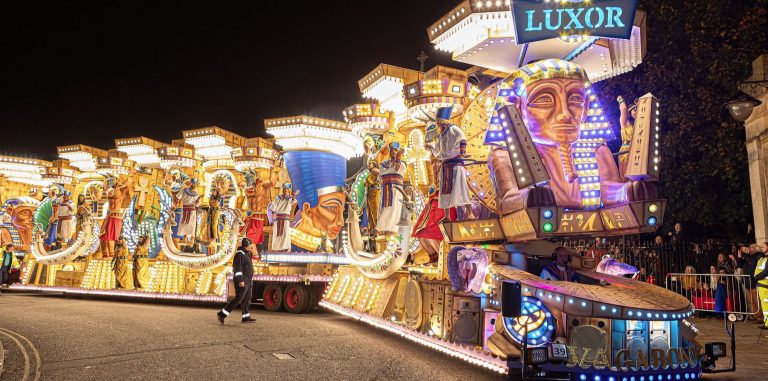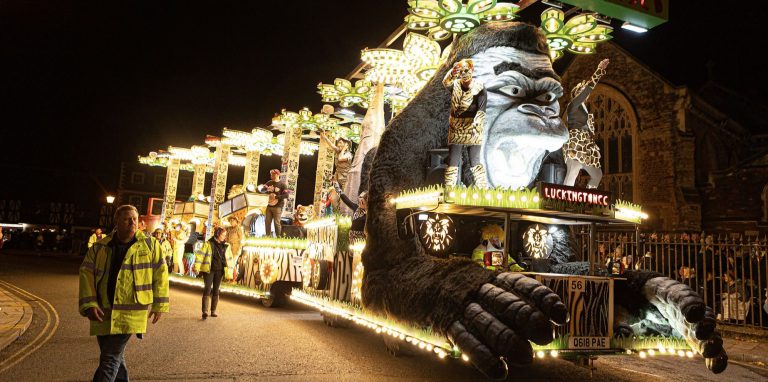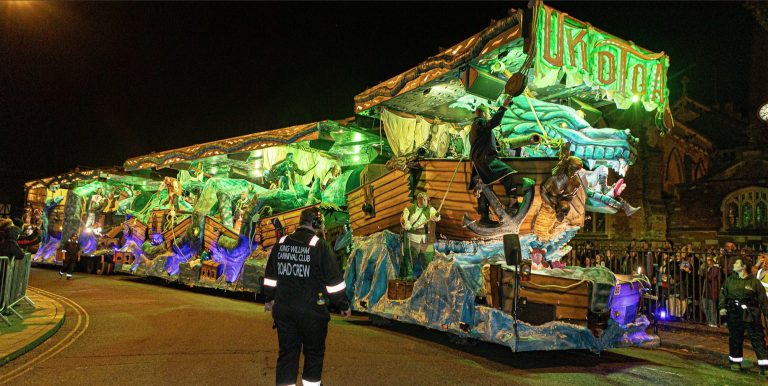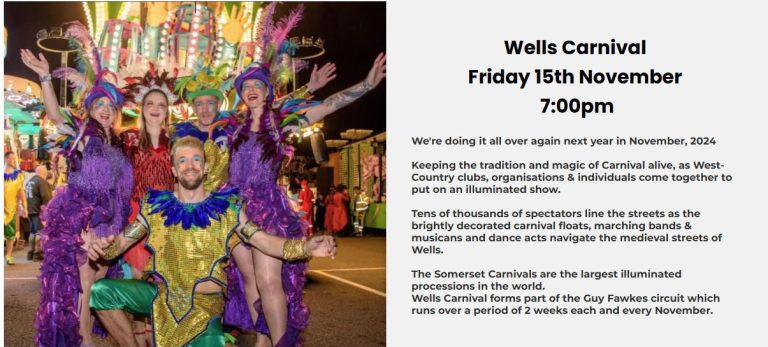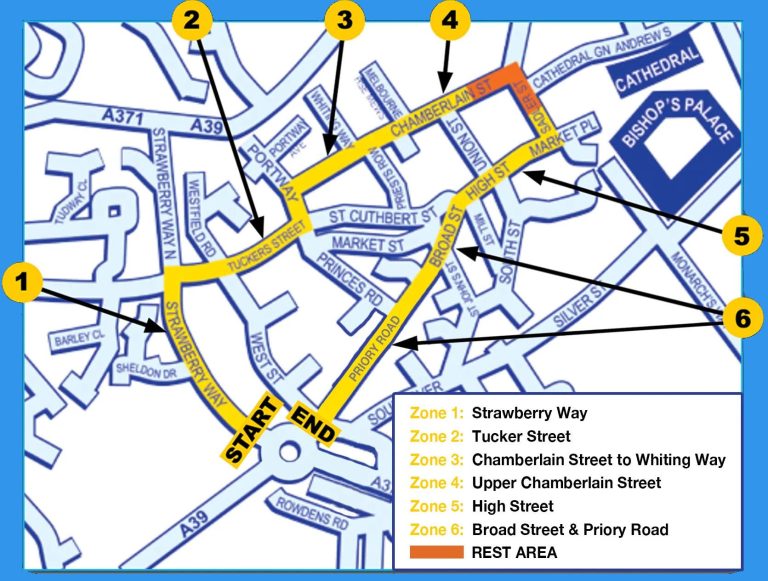Wells Carnival
... and Somerset Carnivals
History Of Carnival
Background to Somerset Carnival
Carnival is one of the most special and unique features of Somerset’s autumn season. Every year more than 150,000 people visit Bridgwater carnival that is believed to be the largest illuminated carnival in the world. In addition to Bridgwater carnival there are another 21 carnivals during the season.
Each area is organised into carnival circuits, with each circuit providing its own competition.
There is the Wessex Grand Prix Carnival circuit (which also encompasses a small bit of Wiltshire and Dorset) comprising the nine towns of Sturminster Newton, Trowbridge, Mere, Frome, Shaftesbury, Gillingham, Castle Cary, Wincanton and Warminster.
The South Somerset Confederation Association circuit that comprises Wellington, Ilminster, Chard and Taunton.
The County Guy Fawkes Association circuit which starts with Bridgwater carnival, quickly followed by North Petherton, Burnham–on–Sea, Shepton Mallet, Wells, Glastonbury and Weston–Super–Mare.
There is also Midsomer Norton carnival.
Carnival clubs and groups travel many miles to line up and parade in colourful spectaculars that bring light, music and business to the towns. Most importantly, they also raise thousands of pounds each year for local charities and good causes.There are at present over 50 carnival clubs with floats (known as carts) which are 100 foot in length. Some carts have two decks of performers with moving parts, turntables and other moving elements with excellent sound systems and up to 30,000 light bulbs. More carts are reducing the energy used by moving to energy saving bulbs and LED’s. Creating carts of this size involves heavy engineering, electronics, carpentry, stage and costume design and the choreography of dance routines.
Carnival has a 400 years history in Somerset beginning with bonfires and burning effigies of Guy Fawkes in Bridgwater. Torchlight processions followed therefore starting the tradition of ‘ carnival processions’, which have developed over 400 years to the spectacular processions of today.
Wells Carnival 2023
This is an amateur video so start to watch after about 2.5 minutes and use the status bar to move it along.
The Carts are judged on the night and they each compete in a particular category which explains why some of the displays are moving and noisy and others are still life (Tableau). There are also awards for individuals and pairs etc. so they aren't competing with the large carnival clubs. As soon as the season is over, they start work on the next year's theme and cart.
The categories are:
Class 1 - Tableau Cart - Open
Class 2 - Tableau Cart - Local
Class 3 - Feature Cart - Open
Class 4 - Feature Cart - Local
Class 5 - Comic Feature Cart
Class 6 - Juvenile Cart
Class 7 - Adult or mixed Adult & Juvenile walking group
Class 8 - Juvenile walking group
Class 9 - Adult, Juvenile or mixed Adult & Juvenile walking group (3 to 7 persons)
Class 10 - Adult, Juvenile or mixed Adult & Juvenile Pair
Class 11 - Adult Single Masquerader
Class 12 - Juvenile Single Masquerader
Class 13 - Single or Pairs with Wheeled Props
Class 14 - Best Decorated Towing Vehicle
Class 15 - Best Dressed Towing Vehicle Driver
Kit to take with you on the night
To Wear
1. Thermal Underwear - It's mid November and the weather can be chill or wet!
2. Warm mid layer - again possibly thermal.
3. Winter coat - for warmth and possibly waterproof.
4. Rain/windproof layer - if the winter coat doesn't provide these properties.
5. Woolen hat
6. Gloves
7. warm socks and stout shoes
Equipment
8. Folding chair - unless you can stand for a couple of hours.
9. Umbrella - you may not need it but just in case.
10. Camera
11. Drinks and snacks - there are street vendors but you might not want to lose your place
Loose Change
12. Loose change - Its not fashionable to carry change since COVID but its important here. The spectacle is free to watch but they are raising money for charities and they put a lot of time into these events. Ther are collectors but there are also "Target Trucks" where you throw money from the Kerb onto the back of the truck and its fun to do. Don't worry about missing as they are always surrounded by collectors picking up fallen coins.
We need your consent to load the translations
We use a third-party service to translate the website content that may collect data about your activity. Please review the details in the privacy policy and accept the service to view the translations.

